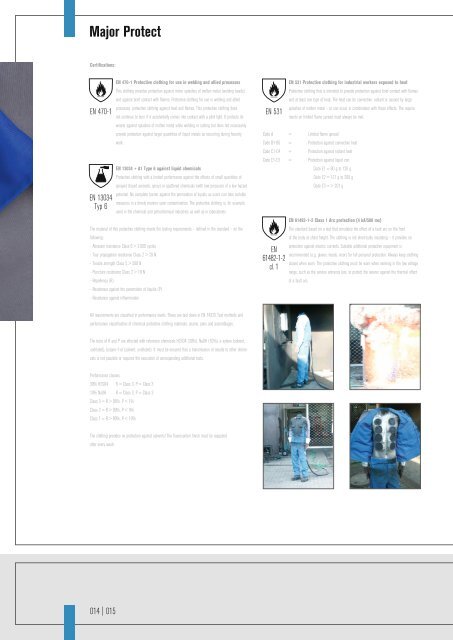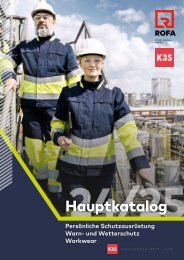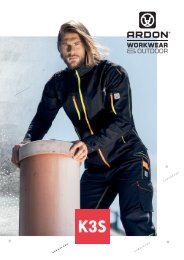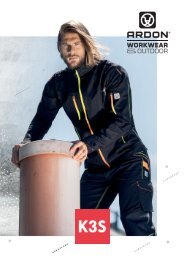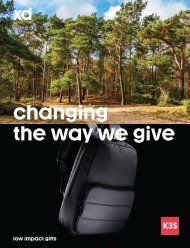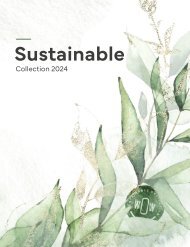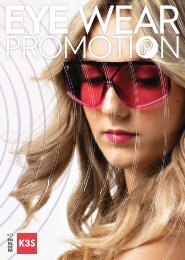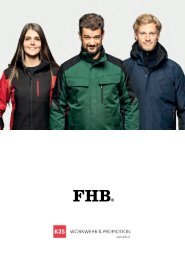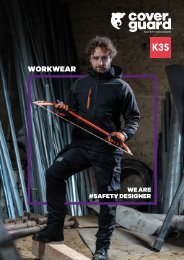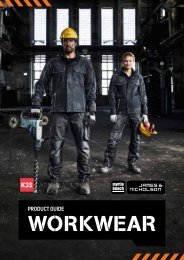K3S Planam Major Protect
Wer in Gefahrenbereichen arbeitet, kennt die Risiken. Wenn Sie schon nicht die äußeren Umstände beeinflussen können, sollten Sie zumindest mit der richtigen Arbeitsschutzkleidung optimale Vorbeugungsmaßnahmen treffen. Mit PLANAM Major Protect sind Sie in vielen Gefahrensituationen auf der sicheren Seite: guter Schutz vor Hitze und Flammen; Brenn-Stopp nach Berührung mit einer Zündflamme; Prävention vor flüssigen Aerosolen, leichten Spritzern und Sprays, wie sie zum Beispiel in der Chemie- und Erdölindustrie vorkommen; im Niederspannungsbereich (Hausanschlusskästen) schützt es den Träger vor den Auswirkungen eines Störlichtbogens; antistatische Wirkung zur Vermeidung von Zündfunken in explosionsgefährdeter Umgebung.
Wer in Gefahrenbereichen arbeitet, kennt die Risiken. Wenn Sie schon nicht die äußeren Umstände beeinflussen können, sollten Sie zumindest mit der richtigen Arbeitsschutzkleidung optimale Vorbeugungsmaßnahmen treffen. Mit PLANAM Major Protect sind Sie in vielen Gefahrensituationen auf der sicheren Seite:
guter Schutz vor Hitze und Flammen; Brenn-Stopp nach Berührung mit einer Zündflamme; Prävention vor flüssigen Aerosolen, leichten Spritzern und Sprays, wie sie zum Beispiel in der Chemie- und Erdölindustrie vorkommen; im Niederspannungsbereich (Hausanschlusskästen) schützt es den Träger vor den Auswirkungen eines Störlichtbogens; antistatische Wirkung zur Vermeidung von Zündfunken in explosionsgefährdeter Umgebung.
Erfolgreiche ePaper selbst erstellen
Machen Sie aus Ihren PDF Publikationen ein blätterbares Flipbook mit unserer einzigartigen Google optimierten e-Paper Software.
<strong>Major</strong> <strong>Protect</strong><br />
Certifications:<br />
EN 470-1 EN 531<br />
EN 1149-3<br />
EN 471<br />
EN 13034<br />
Typ 6<br />
EN 470-1 <strong>Protect</strong>ive clothing for use in welding and allied processes<br />
This clothing provides protection against minor splashes of molten metal (welding beads)<br />
and against brief contact with flames. <strong>Protect</strong>ive clothing for use in welding and allied<br />
processes, protective clothing against heat and flames. This protective clothing does<br />
not continue to burn if it accidentally comes into contact with a pilot light. It protects its<br />
wearer against splashes of molten metal while welding or cutting but does not necessarily<br />
provide protection against larger quantities of liquid metals as occurring during foundry<br />
work.<br />
EN 13034 + A1 Type 6 against liquid chemicals<br />
<strong>Protect</strong>ive clothing with a limited performance against the effects of small quantities of<br />
sprayed (liquid aerosols, spray) or spattered chemicals (with low pressure) of a low hazard<br />
potential. No complete barrier against the permeation of liquids as users can take suitable<br />
measures in a timely manner upon contamination. The protective clothing is, for example,<br />
used in the chemical and petrochemical industries as well as in laboratories.<br />
The material of this protective clothing meets the testing requirements – defined in the standard – on the<br />
following:<br />
- Abrasion resistance Class 6 > 2,000 cycles<br />
- Tear propagation resistance Class 2 > 20 N<br />
- Tensile strength Class 5 > 500 N<br />
- Puncture resistance Class 2 > 10 N<br />
- Repellency (R)<br />
- Resistance against the penetration of liquids (P)<br />
- Resistance against inflammation<br />
All requirements are classified in performance levels. These are laid down in EN 14325 Test methods and<br />
performance classification of chemical protective clothing materials, seams, joins and assemblages.<br />
EN<br />
61482-1-2<br />
cl. 1<br />
EN 531 <strong>Protect</strong>ive clothing for industrial workers exposed to heat<br />
<strong>Protect</strong>ive clothing that is intended to provide protection against brief contact with flames<br />
and at least one type of heat. The heat can be convective, radiant or caused by large<br />
splashes of molten metal – or can occur in combination with these effects. The require<br />
ments on limited flame spread must always be met.<br />
Code A = Limited flame spread<br />
Code B1-B5 = <strong>Protect</strong>ion against convective heat<br />
Code C1-C4 = <strong>Protect</strong>ion against radiant heat<br />
Code E1-E3 = <strong>Protect</strong>ion against liquid iron<br />
Code E1 = 60 g to 120 g<br />
Code E2 = 121 g to 200 g<br />
Code E3 = > 201 g<br />
EN 61482-1-2 Class 1 Arc protection (4 kA/500 ms)<br />
The standard based on a test that simulates the effect of a fault arc on the front<br />
of the body at chest height. The clothing is not electrically insulating – it provides no<br />
protection against electric currents. Suitable additional protective equipment is<br />
recommended (e.g. gloves, hoods, visor) for full personal protection. Always keep clothing<br />
closed when worn. The protective clothing must be worn when working in the low voltage<br />
range, such as the service entrance box, to protect the wearer against the thermal effect<br />
of a fault arc.<br />
EN ISO<br />
11611<br />
EN 1149-3 Test method Measurement of charge decay<br />
Measurement of the discharge of electrostatic charges from the surface of clothing<br />
materials. Discharge of charges = the transfer of a charge via or through a material, as a<br />
result of which the charge density or the surface potential at the point at which the charge<br />
was located is reduced.<br />
Typical areas of application are supply companies (e.g. gas, liquid fuels, fuels), the petrochemical industry,<br />
petrol stations, tank cleaning companies, etc.<br />
Safe earthing, e.g. through the wearing of conductive shoes must be ensured. (Resistance of the shoe < =<br />
10ex8) must be ensured. Please ensure that your entire body is covered (even the clothing worn underneath<br />
the protective clothing), do not undress in potentially explosive areas. Always keep clothing closed when<br />
worn. Application in explosion zone 0 and for gas/vapour and air mixtures of explosion group IIC requires<br />
additional work-specific risk analyses.<br />
Article no.: 5210 Jacket, double layer is additionally certified according to:<br />
RWE Eurotest 10 kA/500 ms<br />
EN ISO 11611 will replace the previous directive EN 470-1,<br />
<strong>Protect</strong>ive clothing for use in welding and allied processes<br />
Clothing produced according to EN ISO 11611 serves to protect the wearer while<br />
welding or performing allied processes involving comparable risks. This clothing<br />
provides protection against spatter (minor splashes of molten metal) and so-called<br />
welding beads as well as brief contact with flames and radiant heat from the arc.<br />
Under normal welding conditions, it offers limited electrical insulation against DC<br />
voltage of up to approximately 100 V.<br />
2<br />
2<br />
EN 471<br />
The European standard regulates the requirements for the reflective material to be used<br />
for high-visibility and protective workwear, as well as minimum surfaces and the arrange<br />
ment of the materials. The minimum surface of visible material, i.e. of the fluorescent<br />
background material in combination with the reflective material is divided into three<br />
classes: Class 3 is the highest class, with the highest level of visibility. Class 1 is the lowest visibility class<br />
that must be achieved to obtain a certificate. Reflective tape is divided into two classes, in accordance with<br />
minimum retroreflective values. Class 2 is the highest class reflective tape can achieve.<br />
The upper number in the pictogram stands for the class of the surface of the background<br />
and reflective material used, the lower number stands for the class of reflective material.<br />
Reflective tape 3M Scotchlite 8935<br />
Scotchlite reflective material 8935 silver consists of retroreflective lenses bonded to a durable, flameresistant<br />
100% cloth backing. It exceeds the minimum retroreflective values required for the highest level of<br />
performance (Class 2) by far. Its retroreflective properties are non-orientation sensitive.<br />
The high-quality reflective tape can be washed at 60°C household wash, 50 cycles in compliance with EN<br />
471.<br />
The constant high quality of Scotchlite reflective material is guaranteed through certified production in<br />
compliance with ISO 9002.<br />
3M and Scotchlite are trademarks of 3M.<br />
The tests of R and P are effected with reference chemicals H2SO4 (30%), NaOH (10%), o-xylene (solvent,<br />
undiluted), butane-1-ol (solvent, undiluted). It must be ensured that a transmission of results to other chemicals<br />
is not possible or requires the execution of corresponding additional tests.<br />
Performance classes<br />
30% H2SO4 R = Class 3, P = Class 3<br />
10% NaOH R = Class 3, P = Class 3<br />
Class 3 = R > 95%, P < 1%<br />
Class 2 = R > 90%, P < 5%<br />
Class 1 = R > 80%, P < 10%<br />
The clothing provides no protection against solvents! The fluorocarbon finish must be reapplied<br />
after every wash.<br />
According to EN ISO 11611, the clothing is divided into the following classes depending on their level of<br />
protection:<br />
Class 1 = protection against less hazardous welding techniques and situations causing lower levels of<br />
spatter and radiant heat<br />
Class 2 = protection against more hazardous welding techniques and situations causing higher levels of<br />
radiant heat<br />
EN ISO<br />
11612<br />
EN ISO 11611 will replace the previous directive EN 531,<br />
<strong>Protect</strong>ive clothing for industrial workers exposed to heat<br />
<strong>Protect</strong>ive clothing that is intended to provide protection against brief contact with<br />
flames and at least one type of heat. The heat can be convective, radiant or caused by<br />
large splashes of molten metal - or can occur in a combination of these effects. The<br />
requirements on limited flame spread must always be met.<br />
Note:<br />
The garments can only provide full protection if worn as a suit. If the garment is changed, in particular by<br />
applying any form of emblem, its protective function cannot be guaranteed. Exceptions must be arranged<br />
with the manufacturer in writing.<br />
Code A1-A2 = <strong>Protect</strong>ion against limited flame spread<br />
Code B1-B3 = <strong>Protect</strong>ion against convective heat<br />
Code C1-C4 = <strong>Protect</strong>ion against radiant heat<br />
Code D1-D3 = Splashes of molten aluminium<br />
Code E1-E3 = Splashes of molten iron<br />
Code F1-F3 = Contact heat<br />
014 | 015


